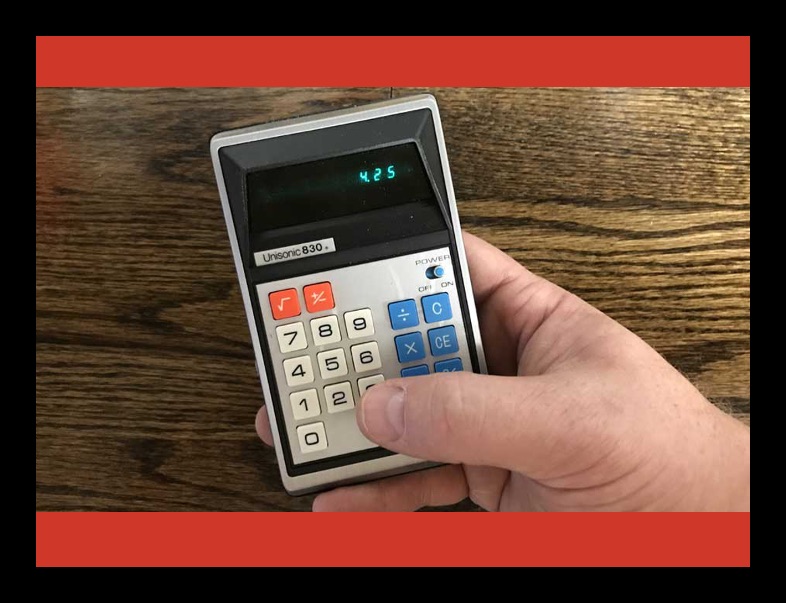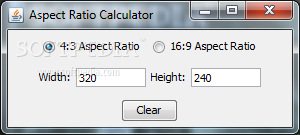

This aspect ratio of 2.39:1 was confirmed by the most recent revision from August 1993 (SMPTE 195-1993). An update in 1970 (PH22.106-1971) changed the aspect ratio to 2.39:1 in order to make splices less noticeable. A SMPTE specification for anamorphic projection from 1957 (PH22.106-1957) finally standardized the aperture to 2.35:1. After 1952, a number of aspect ratios were experimented with for anamorphic productions, including 2.66:1 and 2.55:1. The motion picture industry convention assigns a value of 1.0 to the image’s height an anamorphic frame (since 1970, 2.39:1) is often incorrectly described (rounded) as 2.40:1 or 2.40 ("two-four-oh"). With a space designated for the standard optical soundtrack, and the frame size reduced to maintain an image that is wider than tall, this resulted in the Academy aperture of 22 mm × 16 mm (0.866 in × 0.630 in) or 1.375:1 aspect ratio. The film itself is 35 mm wide (1.38 in), but the area between the perforations is 24.89 mm × 18.67 mm (0.980 in × 0.735 in), leaving the de facto ratio of 4:3, or 1. The universal standard (established by William Dickson and Thomas Edison in 1892) is a frame that is four perforations high. In motion picture formats, the physical size of the film area between the sprocket perforations determines the image's size. With television, DVD and Blu-ray Disc, converting formats of unequal ratios is achieved by enlarging the original image to fill the receiving format's display area and cutting off any excess picture information ( zooming and cropping), by adding horizontal mattes ( letterboxing) or vertical mattes ( pillarboxing) to retain the original format's aspect ratio, by stretching (hence distorting) the image to fill the receiving format's ratio, or by scaling by different factors in both directions, possibly scaling by a different factor in the center and at the edges (as in Wide Zoom mode). Other aspect ratios, such as 5:3, 5:4, and 1:1 (square format), are used in photography as well, particularly in medium format and large format. In still camera photography, the most common aspect ratios are 4:3, 3:2, and more recently found in consumer cameras, 16:9. Other cinema and video aspect ratios exist, but are used infrequently. 7:1), universal for high-definition television and European digital television. 3:1), the universal video format of the 20th century, and 16:9 (1. Two common videographic aspect ratios are 4:3 (1. The most common aspect ratios used today in the presentation of films in cinemas are 1.85:1 and 2.39:1. 8 Previous and currently used aspect ratios.5 Obtaining height, width, and area of the screen.Fortunately, you can still watch The Simpsons in its original 4:3 aspect ratio with a tweak.

For best results, always preserve the aspect ratio you’re working with to avoid unsightly warping.ĭisney famously made this mistake when it decided to stretch classic episodes of The Simpsons on Disney+ to conform with modern 16:9 displays. When it comes to content like images and videos, deviating from the aspect ratio when resizing will result in an image looking stretched or squeezed. The ratio will be displayed above the “Example” image below. You can work out what the aspect ratio of any given rectangle is by simply entering the physical dimensions into the W1 and H1 boxes. The calculator will display the relative height in the H2 field. So, for example, to work out the height based on the width and the aspect ratio, enter your aspect ratio into the W1 and H1 boxes, and then add the physical width into the W2 box. Using this tool, you can calculate height or width based on an aspect ratio, or even work in reverse to work out the aspect ratio of a rectangle based on physical dimensions. If you want to fit a specific piece of content to a particular device-for example, a background wallpaper on a smartphone-an aspect ratio calculator like this one by Andrew Hedges can help. Ultrawide monitors favored by many gamers may come in an aspect ratio of 2.37:1 (commonly marketed as “21:9”), with so-called “32:9” ultrawide monitors now available from a few manufacturers. Television has settled on 16:9 for most broadcast content, although displays exist in all sorts of aspect ratios. This is why you will see black bars on the top and bottom of the frame when watching most movies.

Two of the most common aspect ratios that you’ll see in cinema are 1.85:1 (widescreen) and 2.39:1. In film production, the aspect ratio refers to the shape of the frame. Probably the most commonly quoted aspect ratio is 16:9, which is often interpreted as “sixteen by nine,” where the first number relates to the width (16) and the second to the height (9). Using the aspect ratio, you can work out the height of an object using its width (and vice versa).


 0 kommentar(er)
0 kommentar(er)
